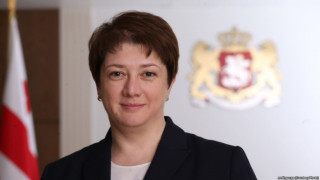Resume: In 2019, the planned budget of the Ministry of Regional Development and Infrastructure is indeed GEL 2 billion and it is the highest figure of the last years.
In 2018, the planned budget of the Ministry of Infrastructure and Regional Development was GEL 1.815 billion which was decreased to GEL 1.58 billion as a result of adjustments. Therefore, the planned budget of 2019 exceeds the same figure of 2018 by GEL 185 million instead of GEL 420 million as claimed by the Deputy Prime Minister. Maia Tskitishvili compares 2019’s planned figure to 2018’s adjusted figure which is not appropriate. The planned figure for 2019 exceeds 2018’s planned figure and 2018’s adjusted figure by 10% and 20% (GEL 420 million), respectively.
In regard to the second part of the statement, the expenses of the Ministry of Infrastructure and Regional Development were GEL 964 million under the cash method as of 1 September 2019 according to the Ministry’s information and which exceeds the same figure of the previous year (GEL 627 million) by GEL 337 million (54%) as stated by the Minister. Of additional note is that the spending of funds allocated for infrastructural parts was problematic in 2018. Nevertheless, the 2018 budget of the Ministry of Regional Development and Infrastructure was executed by 104.89%. On the one hand, this was stipulated by cuts in the planned amount and, on the other hand, by the formal transfer of significantly large sums (42% of the adjusted budget) from the budget which raised reasonable suspicion that the budget plan was artificially executed.
Analysis
The Minister of Regional Development and Infrastructure, Maia Tskitishvili, spoke about the current year’s budget and the state of infrastructural projects at the plenary session of the Parliament of Georgia. Ms Tskitishvili stated: “Money allocated in 2019 is unprecedentedly high. The Ministry has never had GEL 2 billion which is GEL 420 million more as compared to the previous year. As of 1 September 2019, we provided funds for GEL 964 million of work which is 54% more as compared to the same period of the previous year. This year, projects worth GEL 337 million more as compared to 2018 have already been implemented.”
In 2019, the planned budget of the Ministry of Regional Development and Infrastructure is indeed GEL 2 billion and it is the highest figure of the last years.
In 2018, the planned budget of the Ministry of Infrastructure and Regional Development was GEL 1.815 billion which was decreased to GEL 1.58 billion as a result of adjustments. Therefore, the planned budget of 2019 exceeds the same figure of 2018 by GEL 185 million instead of GEL 420 million as claimed by the Deputy Prime Minister. Maia Tskitishvili compares 2019’s planned figure to 2018’s adjusted figure which is not appropriate. The planned figure for 2019 exceeds the planned figure for 2018 and 2018’s adjusted figure by 10% and 20% (GEL 420 million), respectively.
Given the previous experience, it is possible that 2019’s planned amount will be adjusted again. Therefore, it should be compared with 2018’s planned amount instead of the factual figure.
Table 1: Budget of the Ministry of Regional Development and Infrastructure (Planned and Adjusted) and Execution Rate
|
Year |
Budget (Plan) |
Budget (Executed) |
Fact |
Execution Rate |
Share in Total Budget |
|
2012 |
717,115,100 |
767,980,011 |
655,075,159 |
85.29% |
8.86% |
|
2013 |
901,000,000 |
1,003,599,800 |
798,595,100 |
79.57% |
10.29% |
|
2014 |
875,000,000 |
935,734,500 |
904,963,100 |
96.71% |
9.63% |
|
2015 |
869,501,000 |
880,149,200 |
898,398,000 |
102.07% |
9.03% |
|
2016 |
950,000,000 |
967,461,900 |
971,817,600 |
100.45% |
9.22% |
|
2017 |
1,288,047,000 |
1,323,847,000 |
1,355,150,200 |
102.36% |
10.98% |
|
2018 |
1,815,000,000 |
1,584,100,000 |
1,661,664,448 |
104.89% |
14.56% |
|
2019 |
2,000,000,000 |
- |
- |
- |
15.27% |
Source: Ministry of Finance
Table 2: Ministry of Regional Development and Infrastructure and Road Infrastructure Nine Month Budgets in 2018-2019 and their Execution Rate
|
Year |
Ministry’s Budget (Nine Month Plan) |
Fact |
Execution Rate |
Road Infrastructure (Nine Month Plan) |
Fact |
Execution Rate |
|
2018 |
1,010,882,500 |
806,237,600 |
79. 8% |
661,599,000 |
503,796,500 |
76.10% |
|
2019 |
1,309,509,000 |
1,332,737,000 |
101.70% |
833,267,000 |
843,695,828 |
108% |
Source: State Treasury
FactCheck will come back to the Ministry of Regional Development and Infrastructure’s budget execution topic by the end of this year and offer our readers updated information.







